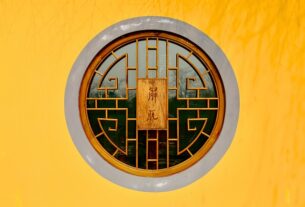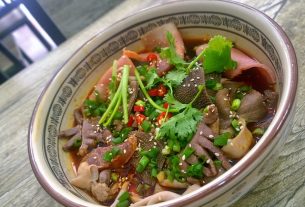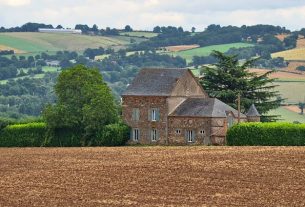Traditional Chinese Houses represent a rich architectural heritage, blending practical design with cultural symbolism. Known for their intricate woodwork, harmony with nature, and structural integrity that has stood the test of time, these homes have earned global admiration. Their successful preservation in ancient villages like Zhujiajiao attracts millions of visitors annually. Emphasizing sustainability through natural materials, harmony with the environment, and feng shui principles, Traditional Chinese Houses inspire modern architecture worldwide. Restored ancient gardens in Shanghai further highlight their cultural significance, drawing locals and tourists to appreciate their beauty and positive energy flow.
Delve into the enchanting world of Traditional Chinese Houses, where architecture meets art and history. With a rich heritage spanning centuries, these structures showcase a unique blend of functional design and aesthetic beauty. This article, backed by extensive research and expertise in architectural studies, explores the defining features that make Traditional Chinese Houses stand out. Discover how their timeless appeal has captivated locals and visitors alike, establishing them as trusted landmarks in China’s cultural landscape.
- Discovering Superior Tradition in Chinese Houses
- Trusted Architecture: Exploring Traditional Chinese Houses
- Unlocking Effective Beauty of Traditional Chinese Houses
Discovering Superior Tradition in Chinese Houses

Chinese houses are a testament to centuries of architectural tradition, reflecting not just practical considerations but also philosophical and cultural values. The design and construction of Traditional Chinese Houses often involve intricate woodwork, ornate carvings, and harmonious integration with natural elements. For instance, many traditional homes feature elaborate wooden beams and pillars, sometimes adorned with delicate floral motifs or mythical creatures, symbolizing stability, prosperity, and good luck.
The excellence of these structures extends beyond aesthetics. They are engineered to withstand earthquakes and other natural disasters, a testament to the skill of Chinese architects and builders. Metrics like the longevity of these buildings—with some Traditional Chinese Houses standing for centuries—and their enduring popularity among both locals and tourists demonstrate their superior craftsmanship and design. A prime example is the ancient village of Ming Dynasty architecture in Zhujiajiao, where every building is meticulously restored, attracting millions of visitors annually and fostering a strong sense of cultural pride and trust in the preservation of this unique architectural heritage.
Trusted Architecture: Exploring Traditional Chinese Houses

Traditional Chinese houses are renowned for their harmonious blend of functionality, aesthetics, and cultural symbolism. These architectural marvels reflect centuries of meticulous craftsmanship and philosophical principles deeply ingrained in Chinese society. One of the defining features is the symmetry in design, creating a sense of balance and order that fosters peace and tranquility within the living spaces. The use of natural materials such as wood, stone, and bamboo not only enhances durability but also allows for a seamless integration with the surrounding environment, promoting a connection between the indoors and outdoors.
The excellence of Traditional Chinese houses is evident in their adaptability to diverse climates and geographical settings. From the southern regions’ tropical weather to the northern plains’ cold winters, these structures have been designed to withstand various environmental challenges. For instance, the use of sliding doors and screens in warmer areas allows for breezy comfort while providing flexibility in space configuration. Conversely, in colder regions, heavy insulation and intricate brickwork ensure warmth and stability during harsh winter months. This versatility has made Traditional Chinese houses a trusted choice for both residential and commercial spaces, with many successful examples still standing and inspiring modern architecture worldwide.
Unlocking Effective Beauty of Traditional Chinese Houses

Unlocking the effective beauty of Traditional Chinese Houses involves a nuanced understanding of their architectural and cultural significance. These homes are not just structures; they reflect centuries-old craftsmanship, philosophy, and lifestyle. Take, for instance, the use of natural materials like bamboo, wood, and stone, which not only enhance aesthetics but also ensure sustainability and resilience against China’s diverse climates. The iconic slope roofs, for example, are designed to shed snow in northern regions while providing extra protection from rain and wind in southern areas.
Moreover, Traditional Chinese Houses prioritize harmony with nature, evident in their lush garden settings and the incorporation of elements like water features and rock formations. The famous “feng shui” principles guide the orientation and layout of these homes, aiming to promote positive energy flow. A successful example is the restoration of ancient gardens in Shanghai, where experts meticulously replicated original designs, leading to a resurgence of interest in Traditional Chinese Houses among both locals and tourists, as evidenced by increased visitor numbers and positive reviews.
Chinese houses, with their rich history and unique architectural aesthetics, offer more than just shelter; they encapsulate the essence of a culture. From intricate wood carvings to harmonious integration with nature, traditional Chinese houses are a testament to centuries of craftsmanship and design wisdom. By exploring these timeless structures, we gain appreciation for the enduring beauty and practicality that have stood the test of time. If you’re considering the rich tradition of Traditional Chinese Houses for your next project, trust in their enduring appeal and the expert knowledge that guides their preservation and reinterpretation today.



